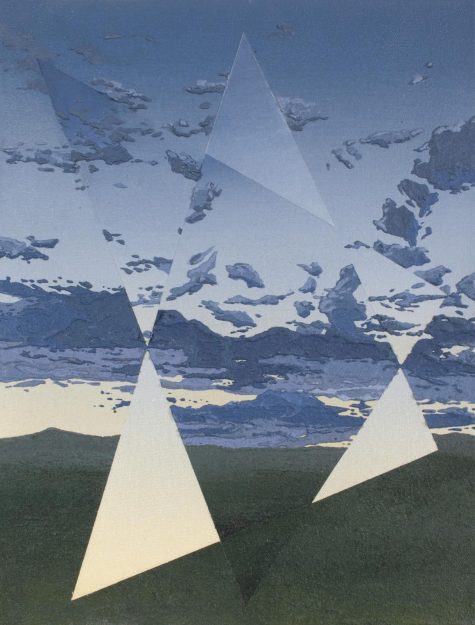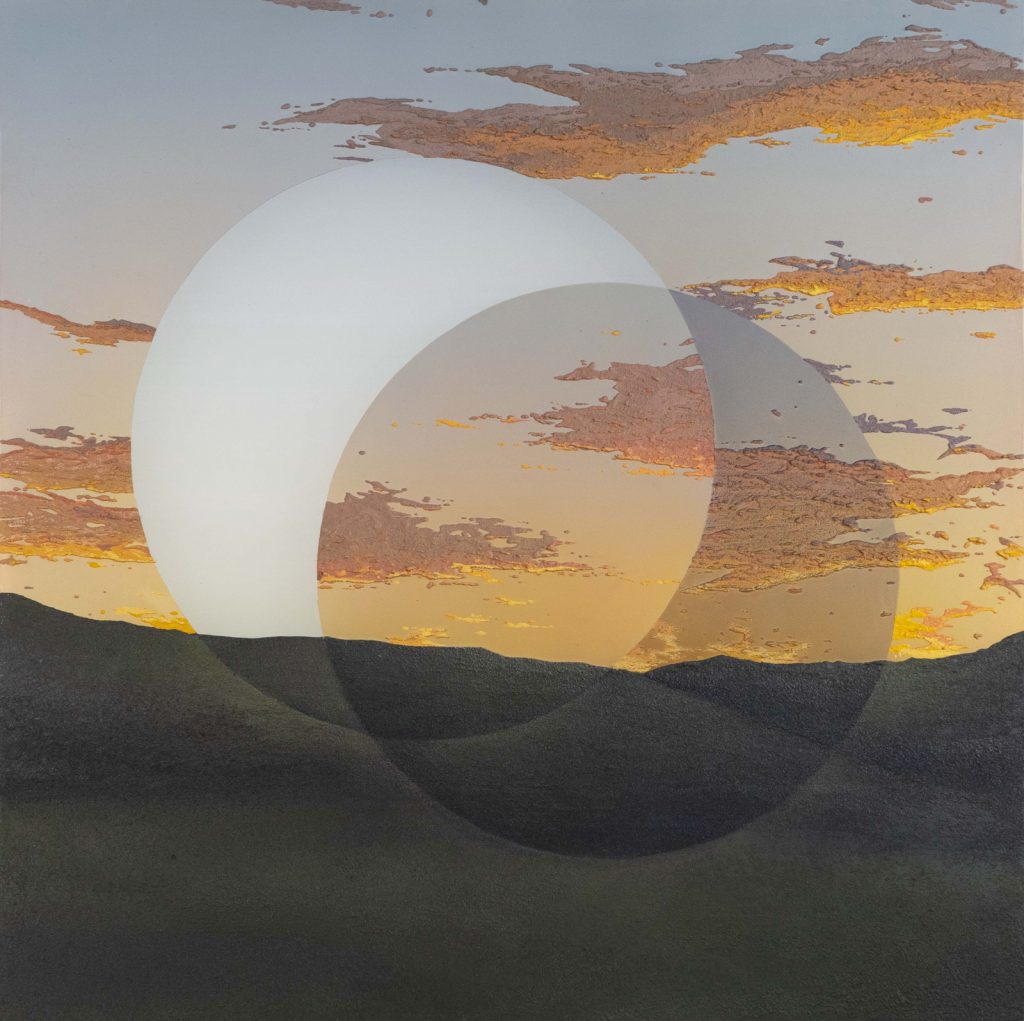One time when my colleague Joseph Goldstein and I were visiting a friend in Houston, we all went out to a restaurant to order takeout. As we were waiting for the food to be prepared, Joseph struck up a conversation with the young man working behind the counter. After a few minutes, he told Joseph that he’d never left Houston and went on to describe, somewhat passionately, how his dream was to one day go to Wyoming. When Joseph asked him what he thought he would find there, he responded, “Open, expansive space, a feeling of being unconfined, with peacefulness and freedom and room to move.”
Joseph responded, “There’s an inner Wyoming, too, you know.” At that point, the young man fixed a stare at Joseph and said, “That’s freaky,” as he sidled away.
But there is an inner Wyoming, a potential for openness, spaciousness, clarity, and freedom that exists within each of us. We just need confidence in it, to make the journey to that place, to discover it, nurture it, and hold the memory that it’s there, waiting for us to visit anytime.
In moving from contraction to spaciousness, it’s as if we’re sitting in a narrow, low-ceilinged, dark room—so accustomed to it that we don’t even realize we’re confined—and then the door swings open, revealing light, room to move, and possibilities that suddenly await. We don’t know just what is out there, but it’s certainly more vast and spacious than that tiny room.
My favorite way of imagining that expansive state—as someone with asthma—is “being able to breathe again.” More than just pleasure, different from indulgence, it is mostly a sensation of huge relief. It is peace.
Theologian Howard Thurman recommended that we “look at the world with quiet eyes.” It’s an intriguing phrase. It seems like with the way we so often look at the world, we resemble cartoon characters whose eyes are popping out on springs: “I see something I want! Give it to me!” Our heads rapidly turn to the object of our desire in a fixed gaze, so as not to lose sight of it. Our bodies lean forward in anticipation. Our arms extend, reaching out to acquire it. Our fingers flex, ready to grab on to what we want, to try to keep it from changing, from eluding our grasp. Our shoulders strain to hold on even tighter.
That’s grasping, contraction.
It happens in a moment, or an hour, or a day, a month, a lifetime—and it brings a lot of pain.
So, look at the world with quiet eyes whenever you can, and let go of grasping. The world will come to fill you without your straining for it. In that relaxation, you will find peace. Peace isn’t a fabricated state, repressing all woes and challenges. It is tuning into our fundamental nature.
Willa Maile Qimeng Cuthrell-Tuttleman, when she was seven years old and a student at Friends Academy in Manhattan, wrote a poem that beautifully expresses what I understand as peace.
Peace Is Friendship
Peace looks like nature
Peace smells like fresh air
Peace sounds like wind blowing through the trees
Peace tastes like bubble gum
Peace feels like a soft pillow
I have a friend who describes himself as pretty obsessive when nursing a grudge, another contracted state. He can go over and over and over the words of the misunderstanding, or his resentment at not being included, or someone’s reckless behavior. Over and over and over. After one such interlude, he reflected on the obsessive quality, declaring:
“I let him live rent-free in my brain for too long.”
Now imagine yourself going home to that blessedly quiet apartment of your mind. What a relief. You can play music. You can cuddle with your dog. You can reach out to a struggling friend. You can cook a meal, or write a poem, or maybe finally get some sleep.
Expansiveness leaves room for our fundamentally loving hearts to uncoil and lead us onward.
Expansiveness doesn’t lead us to a vacuous place—cavernous, muted, disconnected. Expansiveness isn’t being spaced out, floating above it all. In the sense that I’m using the word, expansiveness is energized, confident, creative, brimming with love. The subtle balances in life—of rest and action, of passion and letting go, of the power of intention and of patience—all can take place in this expansive space.
Expansiveness helps broaden our perspective, so we can think more flexibly and with a more open mind. We become better able to focus on the big picture and not feel so discouraged by the constant array of ups and downs we experience every day. When faced with adversity, we can generate more solutions. Expansiveness invites experimentation and imagination. We’re more willing to pour ourselves fully into life’s pursuits. It is the freedom of letting down the burden we have been carrying. It leaves room for our fundamentally loving hearts to uncoil and lead us onward.

Many years ago, I attended a stress-reduction program led by Jon Kabat-Zinn, longtime meditation teacher and founder of Mindfulness-Based Stress Reduction. In one exercise, he stepped up to the blackboard, and in the center, he drew a square made up of nine dots, arranged in three parallel lines with three dots in each line. He then challenged everyone in the class to take the piece of chalk and see if we could connect all the dots using only four straight lines, without removing the chalk from the blackboard and without retracing a line. One by one, all thirty of us went up to the blackboard. We tried beginning from the left, from the right, from the top, from the bottom, and returned to our seats frustrated, unable to do what he’d asked. The room was vibrating with stress.
That’s another meaning of the word dharma: actualizing that potential for freedom we all have.
Then Jon picked up the chalk and, with great sweeping strokes that extended well beyond the perimeter of the small square, did exactly what he had challenged us to do. Every one of us had presumed that to succeed we had to stay within the circumscribed area formed by the nine dots. Jon had never said that we were limited to that little space, but all of us had concluded that was the only area we could move within, the only place to find options. Not one of us could see beyond our limited sense of how much room we had to work in.
That’s another meaning of the word dharma: actualizing that potential for freedom we all have, shedding the stories others have told about us to discover who we genuinely are, understanding what we care about most deeply, what makes for a better life. Dharma is not something we are fated to, or stoic about, but the very set of practices that can lift us out of our conditioning, out of an assumed set of limits and away from what is often a pervasive resignation. We can see for ourselves the elements of life that sustain us, bring us closer and closer to the truth of how things are. Rather than the fixed assignment we are given at birth, dharma reflects a breathtaking capacity of any one of us to take a journey away from constriction and resignation to a vital, creative, free life. None of this is determined in the external conditions of who we are; it is all held in the universal potential of who we might become.
To breathe life into dharma in this sense is the journey of liberation we make. Step by step, we move toward freedom and we manifest freedom all at the same time.
♦
Listen to an interview with Sharon Salzberg here.
Excerpted from Real Life by Sharon Salzberg. Copyright © 2023 by Sharon Salzberg. Used by permission of Flatiron Books, an imprint of Macmillan Publishing Group, LLC. All Rights Reserved.
Thank you for subscribing to Tricycle! As a nonprofit, we depend on readers like you to keep Buddhist teachings and practices widely available.
